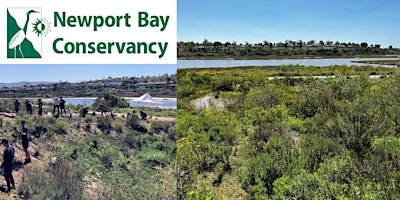Roughly 80 species of fish have been found in Upper Newport Bay. Most numerous are the marine species attracted by the rich supply of plankton and detritus, species such as the topsmelt, anchovy and mullet. It is the silvery mullet that is frequently seen jumping from the water into the air. These species in turn provide food for fish-eating birds and predatory fish such as the gray smoothhound shark. Seasonally, the bay also serves as a spawning and nursery ground for many coastal species, such as the halibut, croaker, white sea bass and barred sand bass. Bat rays and stingrays are common. Find out more about the California halibut.

Round Stingray
Although the marine zone of the bay is limited, the ebb and flow of tides make the mudflats and marshes available to fish much of the time, and several species have adapted to life on the mudflats and in the marsh. The long-jawed mudsucker, the gobies and the killifish can survive in the mudflats and marshes by seeking out small pools or crab burrows or by burrowing into the mud to await the return of the tide. Most specialized of these is the mudsucker, which is adapted specifically for life on the mudflats. It is able to burrow into the mud and survive under extreme conditions of reduced oxygen and elevated temperature. During breeding season these fish pair off following courtship and become reclusive. The male builds a nest in which the eggs are laid. The male then guards the eggs until they hatch.
Here is information on some of the more common fishes found here as well as a complete Fish List as published in the 1989 UNB Ecological Reserve Management Plan.








